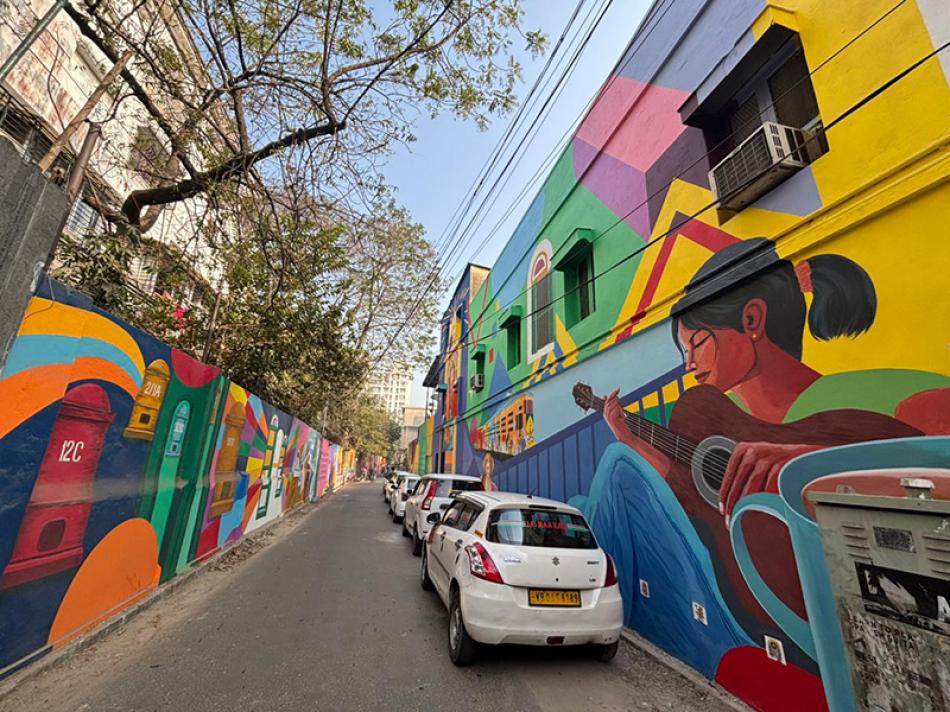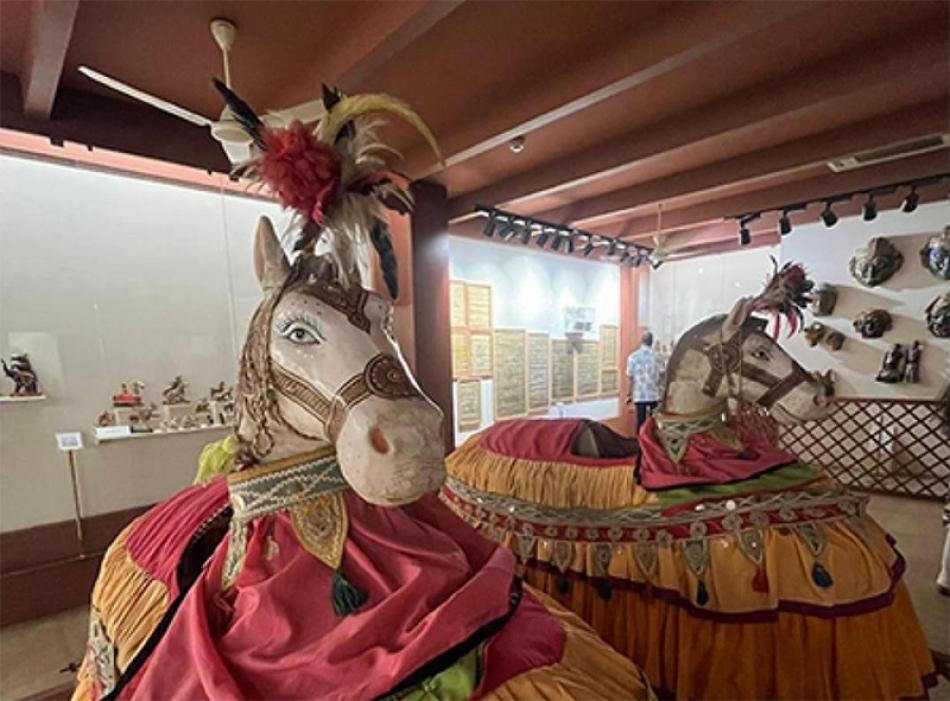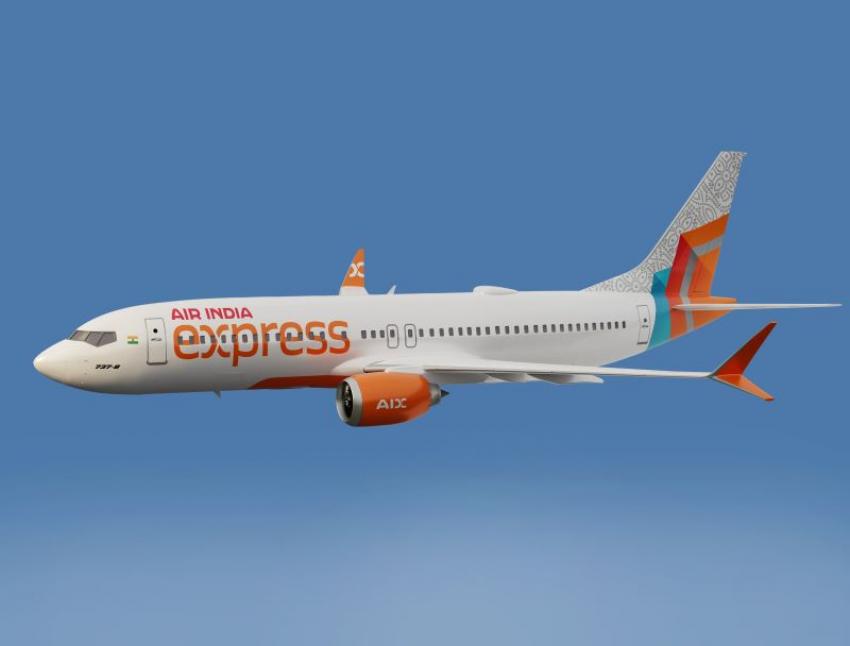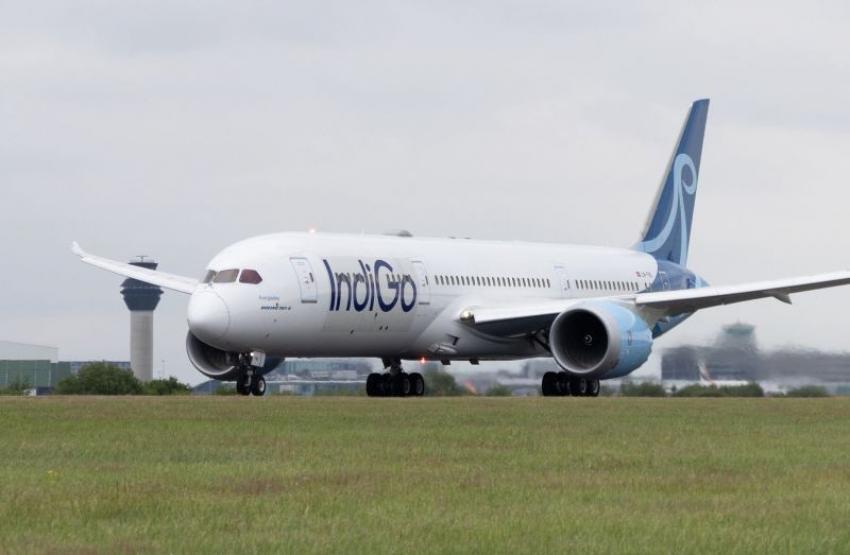NITN | @notintownlive | 13 Jun 2024, 06:17 am
 Aviation
Aviation
The historic, world-changing 1903 Wright Flyer, the first aircraft of the world built by the Wright Brothers has been restored and displayed at NASM at The Wright Brothers & The Invention of the Aerial Age gallery. Photo: Sujoy Dhar
The history of aviation and space exploration, the men right from pioneering aviator-duo Wright Brothers to American aeronautical engineers and astronauts and their mean machines is a fascinating journey through time and space. Sujoy Dhar fastens his curiosity belt at the National Air and Space Museum Washington, DC.
Time: Dec 17, 1903. Place: Kitty Hawk, North Carolina, USA. For 59 seconds, when two American brothers soared a height of 852 feet in a flying machine they built, they created a history that would forever change the modern world. It was no ordinary flight. It marked the beginning of a new game-changing era in transportation.
Wilbur and Orville Wright, famously known as the Wright Brothers, created a new world as they inaugurated the aviation age with the world's first successful flights of a powered heavier-than-air flying machine, now known as the 1903 Wright Flyer.
The Wright Brothers & The Invention of the Aerial Age gallery in this building in Washington, DC. transports you to the world of Wilbur and Orville Wright, reminds you what they achieved and how they did it, and how the world first reacted to their revolutionary invention.
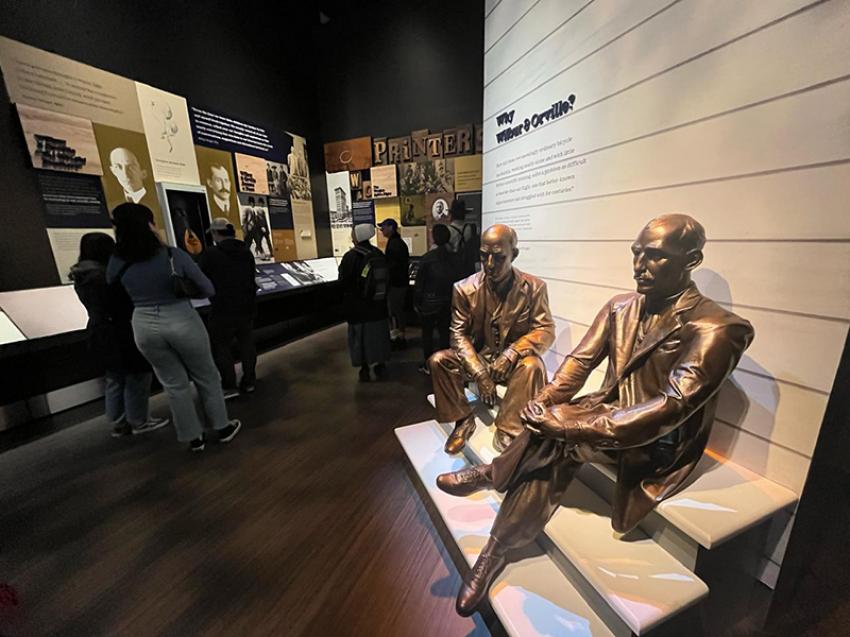 A visitor's world of wonderment starts at the Wright Brothers & The Invention of the Aerial Age gallery where two bronze statues of the genius duo sitting on the steps welcome you.
A visitor's world of wonderment starts at the Wright Brothers & The Invention of the Aerial Age gallery where two bronze statues of the genius duo sitting on the steps welcome you.
Welcome to the Smithsonian's National Air and Space Museum (NASM) in DC which maintains the world's largest and most significant collection of aviation and space artifacts, encompassing all aspects of human flight, as well as related works of art and archival materials.
NASM operates two landmark facilities that, together, welcome more than eight million visitors a year, making it the most visited museum in the country. It also is home to the Center for Earth and Planetary Studies.
Established in 1946 as the National Air Museum, its main building opened on the National Mall in 1976. With millions of visitors now, it is the fourth in the list of most-visited museums in the United States.
The Museum's two buildings (one near Dulles airport) house thousands of artifacts showcased in exhibitions on aviation, space exploration, and planetary science.
.jpg)
At the Museum in Washington, DC, which is located in the heart of the Smithsonian complex in the US capital, some of the most awe-inspiring icons of flight are on display.
The annex which opened in 2003 is the Steven F. Udvar-Hazy Center, near Washington Dulles International Airport in Chantilly, Virginia. It is a massive structure with open, hangar-like settings that accommodate large aircraft and spacecraft, but what you experience at the museum on National Mall is mind-boggling itself.
.jpg)
Wright Brothers: The first flight
At the center of the Wright Brothers story and the heart of the gallery at NASM is the original 1903 Wright Flyer, one of the most iconic artifacts in the Smithsonian’s collection.
While the museum takes you on an intriguing flight of moon landing and ushering in into a world of airplanes, the gallery on the ground floor depicting the invention of the airplane by Wilbur and Orville Wright is most fascinating. The centerpiece of the Wright Brothers gallery is the original 1903 Wright Flyer, one of the most iconic artifacts in the Smithsonian’s collection.

The Wright Flyer was the product of a four-year programme of research and development by the two brothers beginning in 1899. After building and testing three full-sized gliders, the Wrights' first powered airplane flew at Kitty Hawk, North Carolina, on December 17, 1903, laying the ground-breaking foundation of aeronautical engineering.
At NASM you get to see the real Wright flyer. Unbelievable!
"One fairly common question we get here at Air and Space is 'Is this the real Wright Flyer?' The answer, of course, is yes!" the museum website says. So I was naturally thrilled to see up close and personal the history-making 1903 Wright Flyer representing a moment of great triumph by Orville and Wilbur Wright.
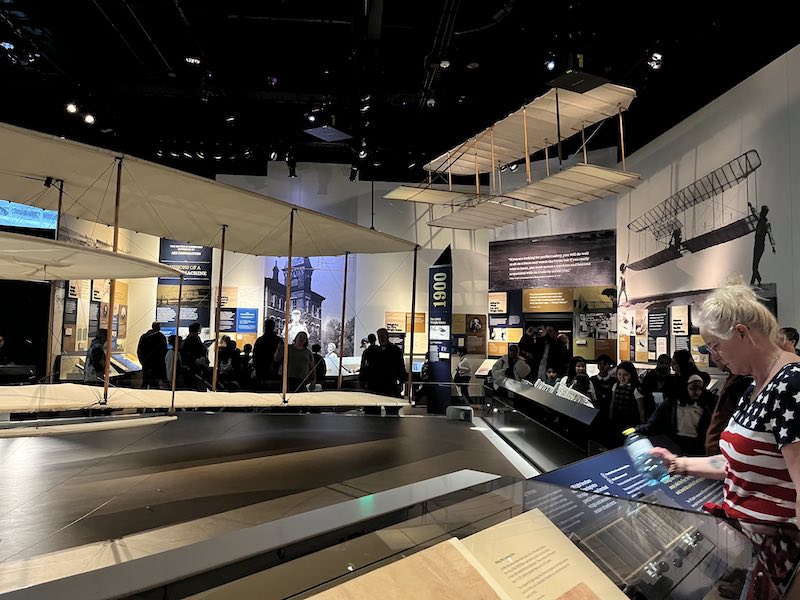
The contraption only has some new fabric being sewn onto the original framework. At one point I was wondering if I am indeed seeing the first aircraft of the world as, the museum website says, many people know that after the Wrights made their last flight on December 17, 1903, the Flyer was upturned by a strong gust of wind and severely damaged.
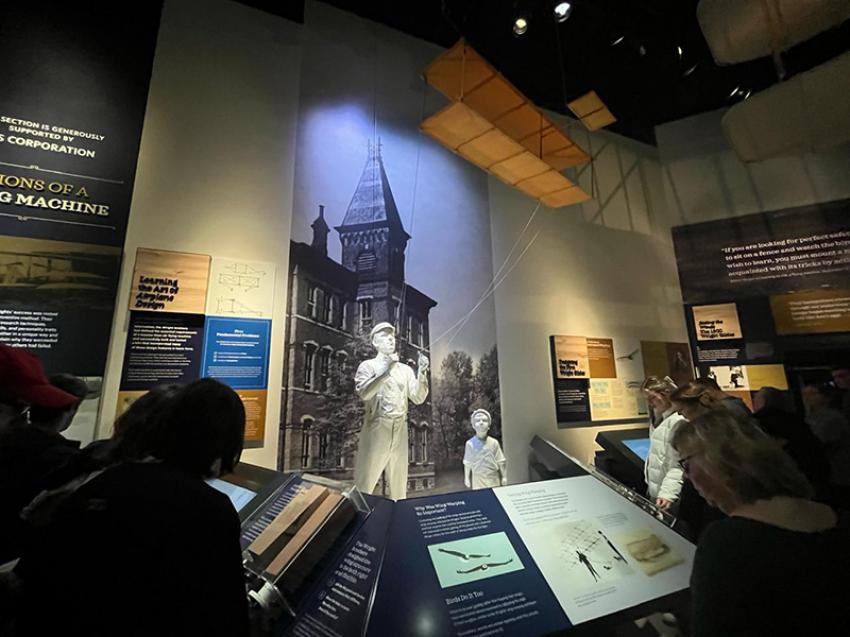 The Wright Brothers & The Invention of the Aerial Age gallery tells the story of how the world ushered into the aviation age by the two brothers.
The Wright Brothers & The Invention of the Aerial Age gallery tells the story of how the world ushered into the aviation age by the two brothers.
"Thinking the airplane was destroyed, some of these folks are under the impression that the original 1903 Wright Flyer doesn’t exist at all. So let me make it clear for all, when you visit the National Air and Space Museum and stand before the Wright Flyer you will be just a few feet away from the original, real, world-changing 1903 Wright Flyer—not a copy," the museum says.
.jpg)
Journey to the Moon
While it is in 1959 that the machines actually began going to the moon, the humans first walked on its surface in 1969 when the Apollo 11 American spaceflight first landed humans on the Moon. Commander Neil Armstrong and Lunar Module Pilot Buzz Aldrin landed the Apollo Lunar Module Eagle on July 20, 1969 with Armstrong becoming the first person to step onto the Moon's surface six hours and 39 minutes later, on July 21 at 02:56 UTC. Aldrin joined him 19 minutes later.
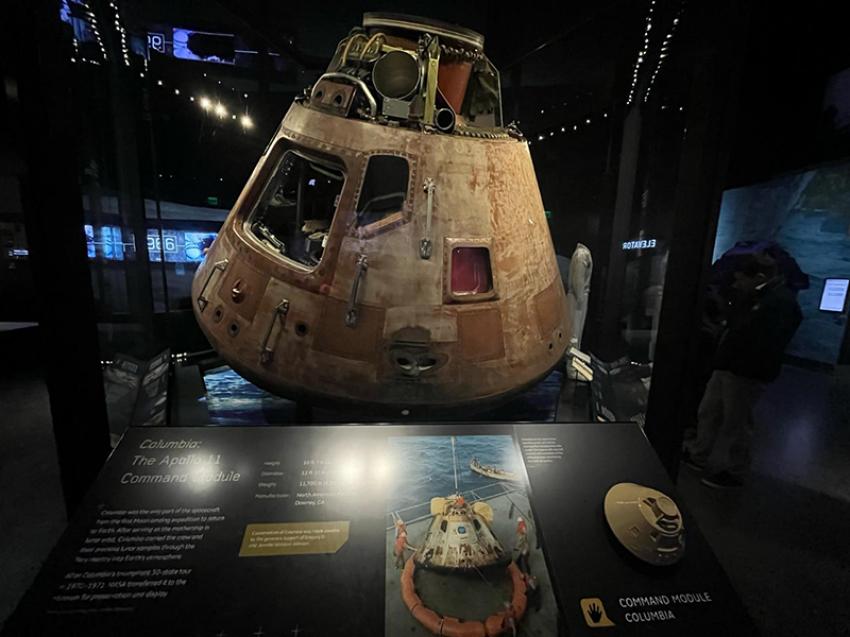 The Apollo 11 Command Module, Columbia, carried astronauts Neil Armstrong, Edwin "Buzz" Aldrin and Michael Collins to the Moon and back on the first lunar landing mission in July, 1969.
The Apollo 11 Command Module, Columbia, carried astronauts Neil Armstrong, Edwin "Buzz" Aldrin and Michael Collins to the Moon and back on the first lunar landing mission in July, 1969.
Michael Collins was the American astronaut who flew the conical shaped Apollo 11 command module Columbia around the Moon while his crewmates, Neil Armstrong and Buzz Aldrin, made the first crewed landing on the surface.
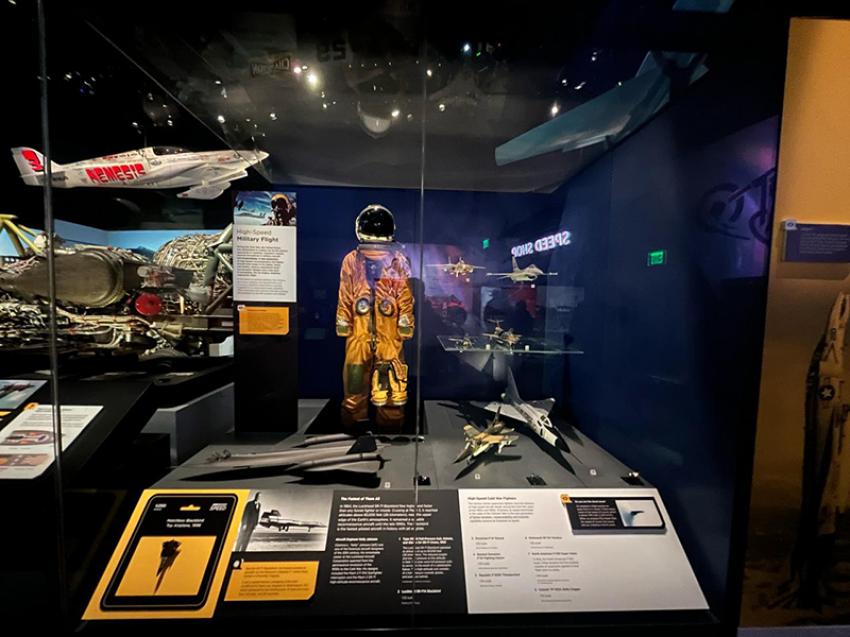 Destination Moon gallery tells the story of America's space odyssey.
Destination Moon gallery tells the story of America's space odyssey.
At NASM, the Destination Moon exhibition features iconic objects from the Museum's unrivaled collection of Mercury, Gemini, and Apollo artifacts, including Mercury spacesuit and spacecraft of American astronaut Alan Shepard's who in 1961 became the first American to travel into space and, in 1971, he became the fifth and oldest person to walk on the Moon, at age 47. You also see here the Saturn V F-1 engine, and Neil Armstrong's Apollo 11 spacesuit and command module Columbia.
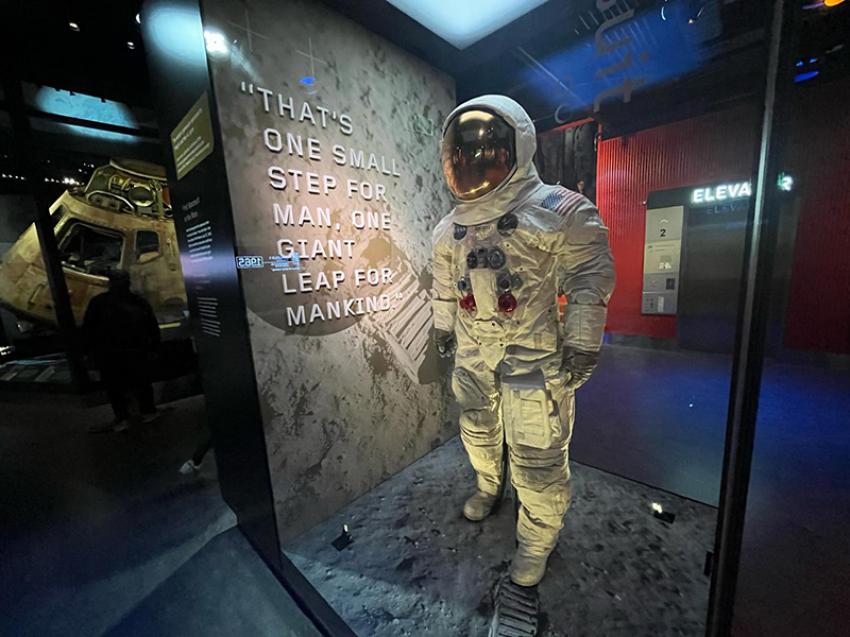 There are many iconic objects in display in Destination Moon, including command module Columbia and Neil Armstrong's Apollo spacesuit.
There are many iconic objects in display in Destination Moon, including command module Columbia and Neil Armstrong's Apollo spacesuit.
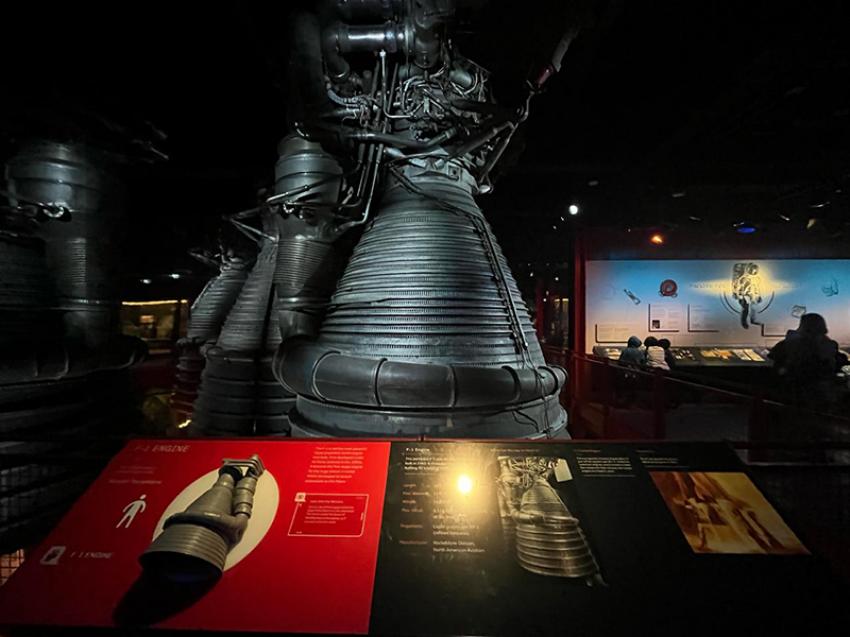 The F-1 engine, with 1.5 million pounds of thrust, was the powerplant for the first stage of the 363-foot long Saturn V launch vehicle that took astronauts to the Moon for six successful landing missions between 1969 and 1972 in the Project Apollo program.
The F-1 engine, with 1.5 million pounds of thrust, was the powerplant for the first stage of the 363-foot long Saturn V launch vehicle that took astronauts to the Moon for six successful landing missions between 1969 and 1972 in the Project Apollo program.
The gallery shows how an extraordinary combination of motivations, resources, and technologies made it possible for humans to walk on the Moon—and how and why we are going back today.
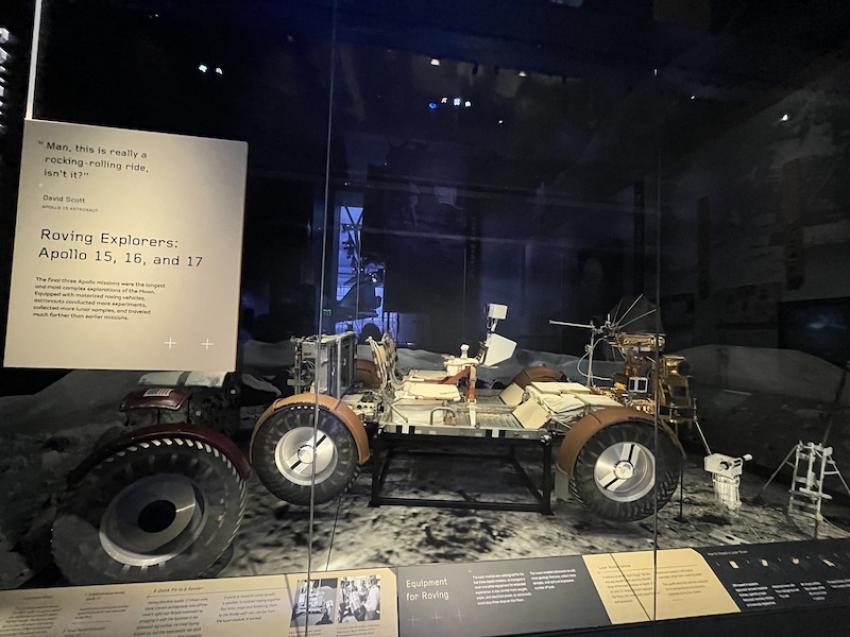 The roving explorer (Lunar Roving Vehicles) of Apollo missions in display.
The roving explorer (Lunar Roving Vehicles) of Apollo missions in display.
America by Air
When I first flew an aircraft several decades ago at a young age, I was overcome with excitement, awe and fear. Each time there was midair turbulence in that two and half hours' flight, I felt jittery and when the plane landed safely I was relieved. But even before I first took a flight I would always collect old magazines with images of early aircraft and then when the Internet came, I would search the web to know how they looked before the modern aircraft we fly now for almost every intercity travels in our own country.
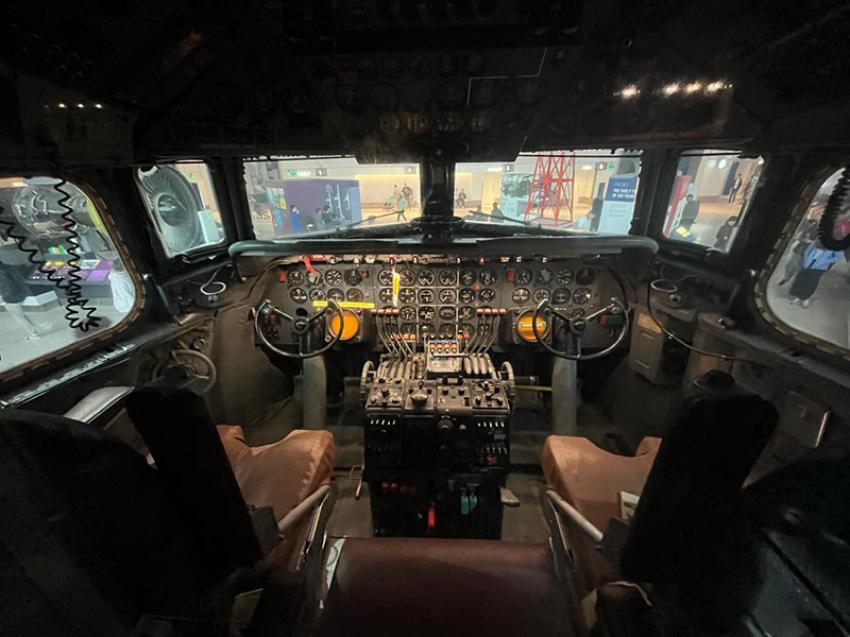 The pilot's panorama of Douglas DC-7 aircraft of the 1950s.
The pilot's panorama of Douglas DC-7 aircraft of the 1950s.
So naturally I found the gallery America by Air most interesting wondering how it was like to fly those days. Multiple aircraft hang from the ceiling in the exhibit at NASM while there are attires of air hostesses, flight attendants and pilots on display.
From displaying the aisles and seats to the pilot's cabin and panorama of old aircraft, this segment traces the history of commercial aviation in the United States from airmail to airlines.
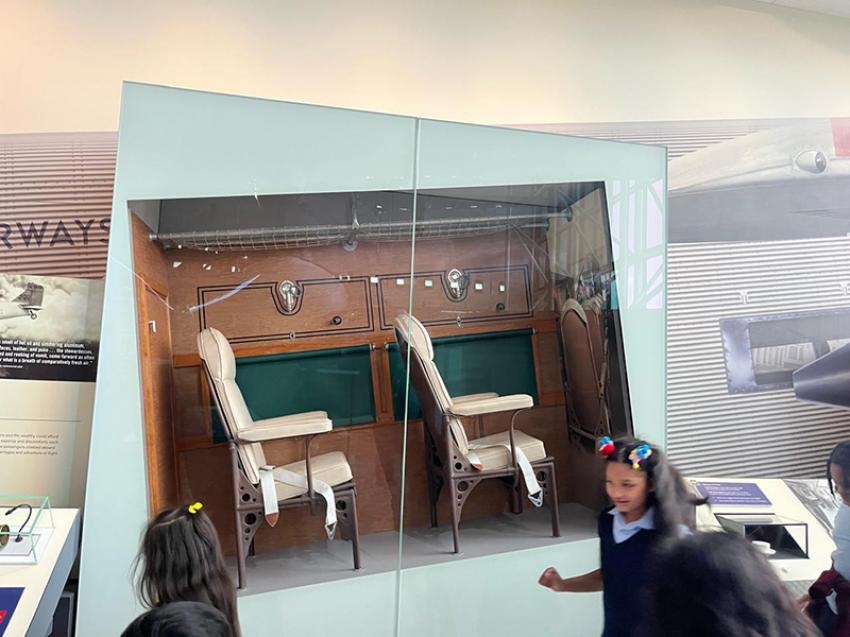 This is how the interiors and seats looked like in a commercial flight aircraft in the old days.
This is how the interiors and seats looked like in a commercial flight aircraft in the old days.
Exploring the history of air transportation in the United States, this exhibit shows how the federal government has shaped the airline industry, how improvements in technology have revolutionized air travel, how the flying experience has changed, and how different airlines have fared over the course of the history of commercial aviation.
One interesting exhibit is the Fairchild FC-2. Developed as an efficient camera plane in 1927, the Fairchild FC-2 was the production version of Sherman Fairchild's first aircraft, the FC-1. It could cruise for long distances at high altitudes because it had an enclosed cabin to protect the crew and equipment.
The basic design was so good that the aircraft's duties rapidly expanded to include airmail delivery, passenger flights, freight hauling, and bush flying, the museum chronicles.
The Fairchild FC-2 on display above was one of the first aircraft flown by Pan American-Grace Airways (Panagra) in South America. It made the first scheduled passenger flight in Peru, from Lima to Talara on September 13, 1928. It could carry five persons, including the pilot.
On display is Douglas DC-7, an American transport aircraft built by the Douglas Aircraft Company from 1953 to 1958. It is described as an advanced development of a DC-6B piston-engine airliner. It was introduced by American Airlines on its New York–Los Angeles route in November 1953 and was the first airliner to provide nonstop transcontinental service in both directions.
Boeing delivered the first 727 (Boeing 727) to Eastern Airlines in 1964.
When production ended in 1983, Boeing had built 1,831 planes of 727, a jet airliner production record at that time.
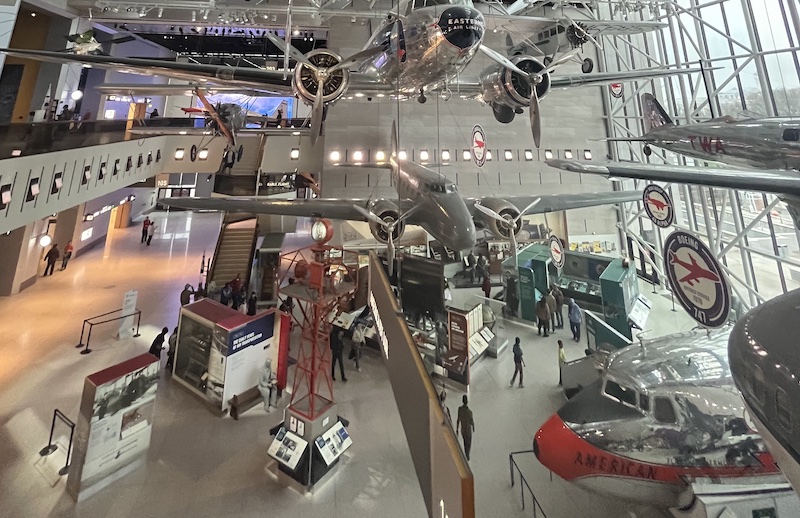
At NASM you experience the great step forward in metal aircraft. Introduced in 1930, the Northrop Alpha exhibited here represents a transitional air transport design, a blend of old and new aircraft technology.
According to the museum account, the Alpha could enclose six passengers in a snug, comfortable cabin, but the pilot remained exposed to the elements. The aircraft was all metal and streamlined, but had fixed landing gear and only one engine.
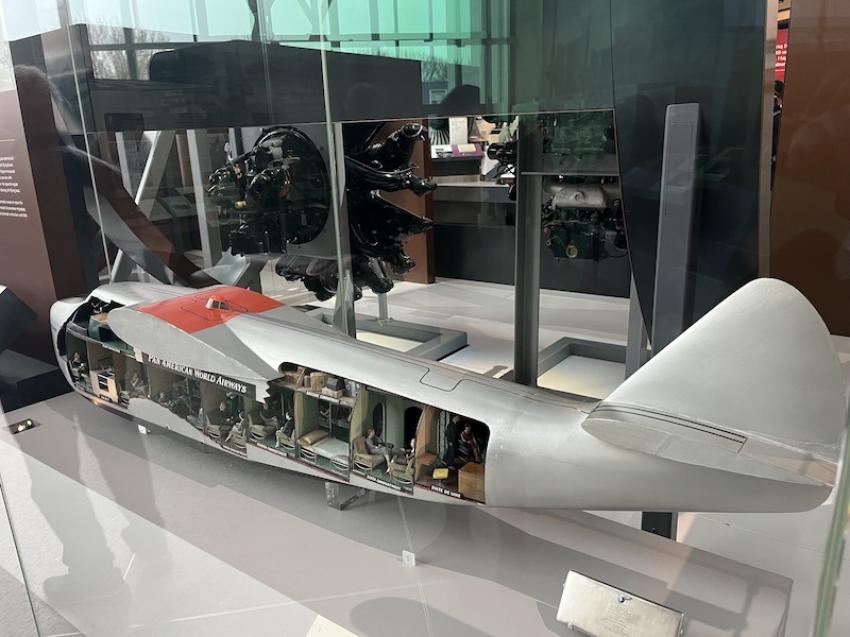 This is how the interiors looked in a commercial flight aircraft of Pan American World Airways.
This is how the interiors looked in a commercial flight aircraft of Pan American World Airways.
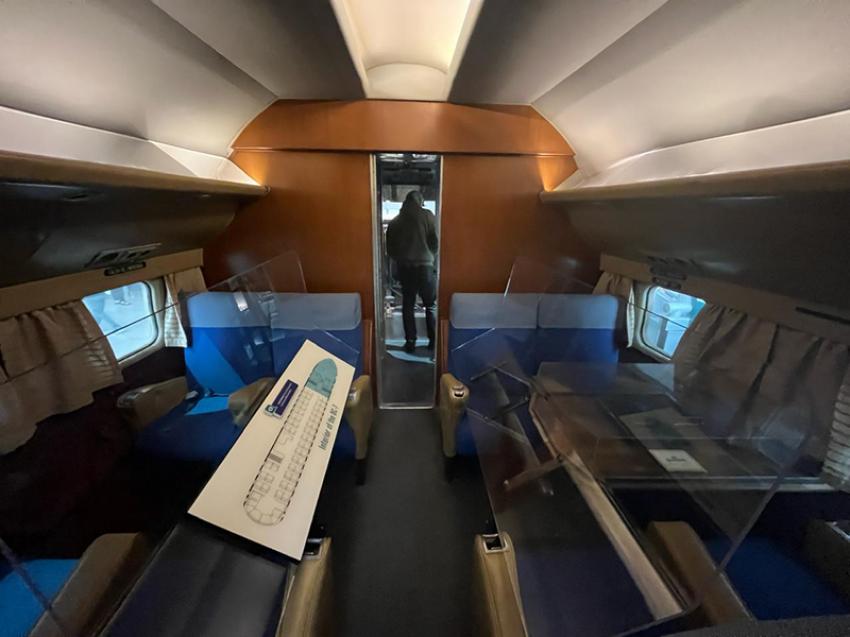 This is how the interiors and seats looked like in a commercial flight aircraft in the old days.
This is how the interiors and seats looked like in a commercial flight aircraft in the old days.
Designed by John K. "Jack" Northrop, the Alpha was a great advancement in metal aircraft. Many of its features, particularly the multicellular wing design, were later used in the Douglas DC-2 and DC-3. Although more powerful twin-engine aircraft rendered the Alpha obsolete for passenger service, it continued to serve as a fast express cargo plane.
This aircraft in display was restored by volunteers from Trans World Airlines (TWA).
If you are an aviation enthusiast, you cannot afford to miss NASM in Washington, DC. It is free, but you need to reserve your free entry pass online for the Museum in Washington, DC. No passes are required for the Steven F. Udvar-Hazy Center in Chantilly, VA. at Dulles airport.
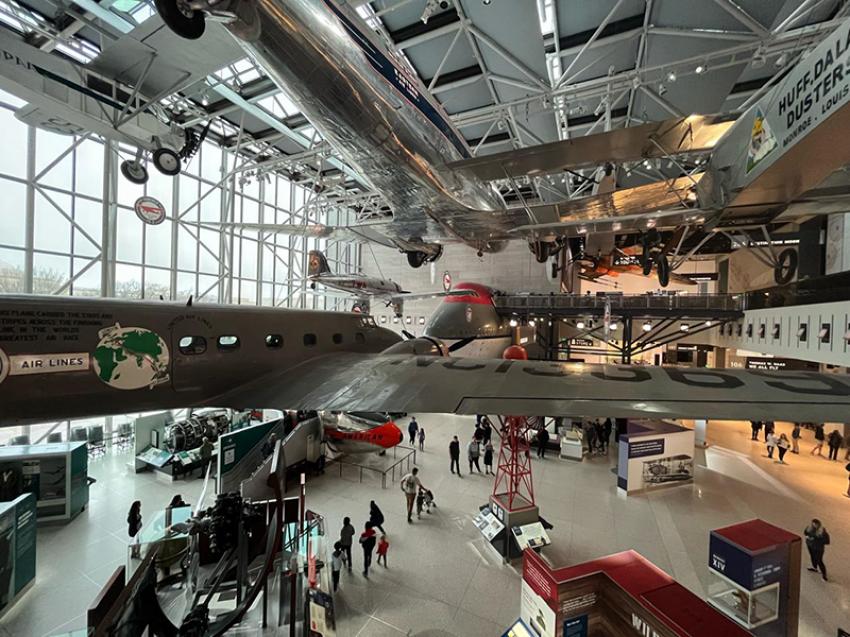 Aircraft on display hangs from above at the NASM
Aircraft on display hangs from above at the NASM
So if you are visiting Washington, DC. , then just walk in with your pass and tighten your curiosity belt to transport into a world of skyfaring humans and their sky-conquering machines.
.jpg)
- This City is Quietly Redefining What a Holiday Experience Looks Like
- Saigon Sisters in Chicago — A Dumplings & Bao Love Story
- Beyond Old and New: Bickram Ghosh and the Art of Fusion at Serendipity
- From Kennedy’s Proposal to 1850s Saloons: The Three Historic D.C. Restaurants Everyone Must Try
- This city has the best bagel in the US, and it’s not New York!
- I escaped to Pachmarhi — what I found in the queen of Satpura left me spellbound
- Air Canada just ranked the Best New Restaurants of 2025 - And the Top Spot isn't who you think
- Rediscovering Arunachal's Monpa Cuisine: One Woman’s Millet Momo Revolution
- Discovering Heritage: A visual journey through Odisha crafts museum Kalabhoomi
- From kebabs to biriyani: Lucknow gets UNESCO honour for its royal cuisine
Tata Group-owned Air India on Tuesday announced a new, unilateral codeshare partnership with airBaltic, the flag carrier of Latvia, thus making the Baltic region more conveniently accessible for Air India customers.
Air India Express, India’s first international value carrier, has rolled out its monthly, ‘PayDay Sale’, offering special fares across its domestic and international network.
Mumbai: IndiGo has commenced operations from the newly inaugurated Navi Mumbai International Airport (NMIA).

